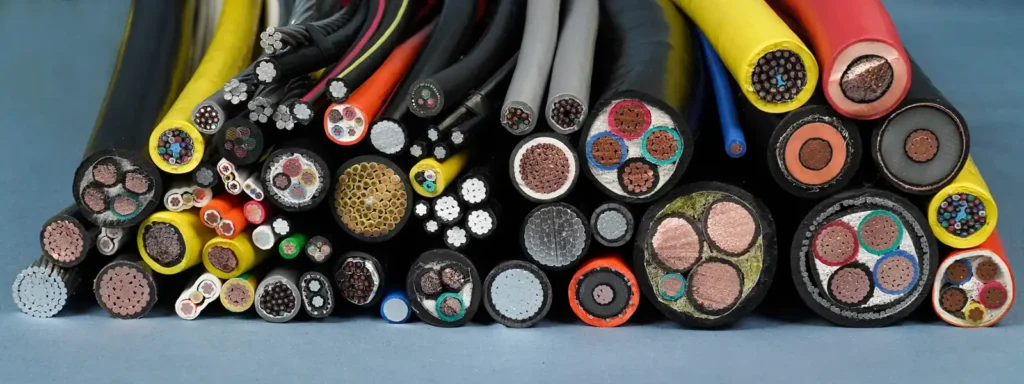Messi Biology states that in the modern field of power transmission and communication, the safety and durability of cables are crucial. As the protective outer layer of cables, cable materials need to possess properties such as high-temperature resistance, flame retardancy, and aging resistance. Magnesium oxide (MgO), a seemingly ordinary inorganic material, is becoming an indispensable key additive in high-end cable material formulations due to its unique functionality.

Cables generate heat during operation, and temperatures can rise sharply, especially during overload or short circuits. Traditional cable materials such as polyethylene (PE), polyvinyl chloride (PVC), or chlorinated polyethylene (CPE) decompose easily at high temperatures, releasing acidic gases like hydrogen chloride (HCl), leading to material degradation, corrosion of metal conductors, and even fire. The addition of magnesium oxide aims to solve these problems:
- Efficient Acid Scavenger
CPE/PVC and other chlorine-containing materials decompose and release HCl during thermal processing or use, forming autocatalytic degradation. Magnesium oxide rapidly captures HCl through a neutralization reaction: MgO + 2HCl → MgCl₂ + H₂O. This blocks the degradation chain reaction, significantly extending the material’s thermal aging life. - Flame Retardant Synergist
Magnesium oxide decomposes endothermically at high temperatures (MgO → Mg + 1/2O₂), lowering the material’s surface temperature. At the same time, the generated magnesium compound coating can inhibit the diffusion of flammable gases and synergistically enhance flame retardancy with halogen-containing systems. - Performance Enhancer
As an inorganic filler, nano-sized magnesium oxide can improve the mechanical strength, dimensional stability, and arc resistance of the rubber compound, while also reducing vulcanization time and increasing production efficiency.
Technical Challenges: Not All Magnesium Oxide is Suitable
Cable materials have extremely stringent requirements for magnesium oxide’s performance:
- High Purity: Impurities (such as CaO, Fe₂O₃) may catalyze degradation or lead to decreased insulation.
- Appropriate Activity: Too high activity can cause scorching during processing, while too low activity results in insufficient neutralization efficiency.
- Nanoscale Dispersion: Agglomerates can become stress defect points, reducing mechanical properties.
- Low Hygroscopicity: Residual moisture can lead to bubbles or deterioration of dielectric properties in cable materials.
Messi Biology: A Technology Leader in Magnesium Oxide for Cables
To address industry pain points, Hebei Messi Biology Co., Ltd. has developed a series of high-purity magnesium oxide products specifically for cables, offering significant technical advantages:
- Ultimate Pursuit of Purity and Electrical Properties
Using high-purity magnesium sources and dynamic calcination processes, the product purity reaches over 99.9%, with particular control over chloride ions (Cl⁻) and heavy metal content. This ensures that the cable’s insulation resistivity remains above 10¹⁵ Ω·cm, meeting the demands of high-voltage cables. - Precise Activity Control Technology
Through crystal growth control and surface modification, different activity grades are provided:- High Activity Type: Used for special cables with extremely high heat resistance requirements (e.g., ship cables).
- Medium Activity Type: Balances processing safety and efficiency, suitable for CPE-based cable materials.
- Low Activity Type: Used for light-colored cable materials to avoid discoloration at high temperatures.
- Nanoscale and Dispersion Breakthroughs
Utilizing wet grinding and surface coating technologies, uniform distribution with an average particle size of 200-500 nanometers is achieved. Surface modification with stearic acid and other treatments enhances its dispersibility in polymers by more than 50%, preventing “blooming” phenomena. - Multi-functional Integrated Design
Developed composite magnesium oxide (e.g., MgO-SiO₂ core-shell structure) to simultaneously achieve acid scavenging, flame retardancy, and reinforcing functions, reducing the variety of additives and lowering formulation costs.
A cable enterprise used Messi Biology’s “medium-activity nano magnesium oxide” to produce CPE sheath material. Its thermal aging life (136℃ × 168h) passed UL certification, with a tensile strength change rate of ≤10%, far superior to the industry standard (≤20%), and no scorching phenomena during extrusion processing.
As 5G communication, new energy vehicle charging piles, and other scenarios continuously raise the performance requirements for cables, the application of magnesium oxide in cable materials is evolving towards functional compounding and refined structures. Although magnesium oxide is only a small additive component in cable materials, it is a behind-the-scenes hero ensuring the long-term safe operation of power’s “blood vessels.” Through continuous innovation by technology companies, this traditional material is revitalized, guarding the energy and information pulse of modern society.
Here’s an image illustrating the concept of a cable cross-section, highlighting its protective layers and the role of specialized additives like magnesium oxide.
